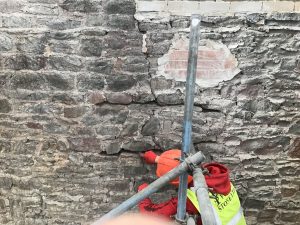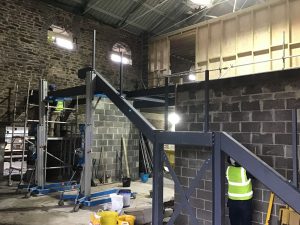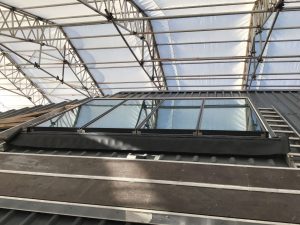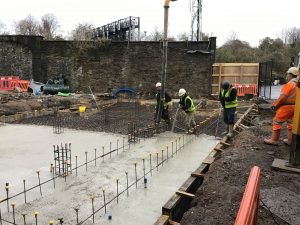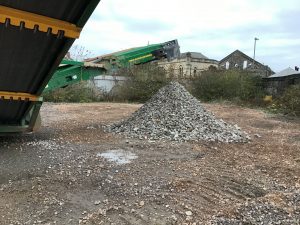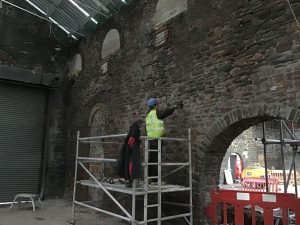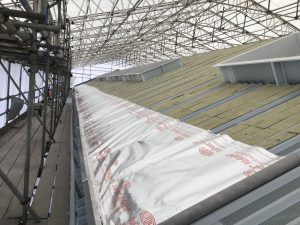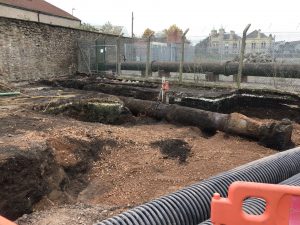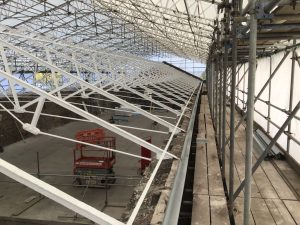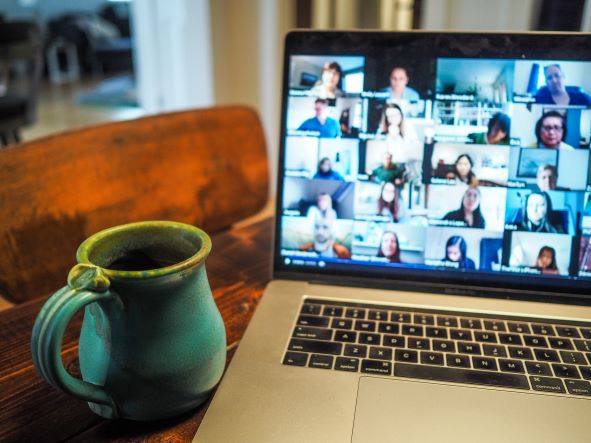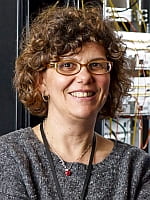Angus Balbernie writes about his participation in Soma, a BDFI partnership project.
Soma combines somatic-based dance practices and immersive multi-person VR to explore pathways for sensory connections and examine how our interior and exterior worlds are mediated by technology. They are working towards premiering a new VR-dance film which reveals point of view experiences and creative audio descriptions of two dancers in a duet which crosses between physical and virtual bodies and environments at the Bloomsbury Theatre, London in May 2022.

Today, as I’m writing, Storm Eunice blows hard here over Dartmoor, and
I’m watching the trees bend and break and thinking about being involved in Lisa May Thomas’s Soma Project.
I knew nothing about VR before being asked by Lisa to help mentor the project. I’ve never “gamed” in my life, never held two controllers and stared at activity on a screen.
Now I have. Now I’ve entered a world inside a headset. A world created and shared in a way JJ Gibson would have got all afferent and efferent about, in how we share our perceptions and relationships to the environment we are alive in. And yet I’m inside a plastic container, wrapped over my eyes, in a world generated from across the room – from inside a laptop.
I’m wrapped in a deserted world of blue sky, yellow dawn and shifting floor. I have no body, no relationship to the norms of place or navigation. I focus on my hands and the controllers as they affect this golden band floating around me. I can turn it and twist it and share it with others also in their VR state too. We have a form of exchange, and we begin to dance.
Something settles in this generated world. Something shifts in how the body senses itself as an activity that somehow responds to both an inner and outer sense of itself. What would normally be understood as anomic becomes shared. What is very isolating leaks into a shared environment.
There is something being shaped here, being danced, being created.
It happens in layers. The individual in the VR headset, and in a VR world.
The dancer who supports and informs them, surrounds them with their attention. The witness who watches and attends to both of them, a kind of satellite of attention, questioning and observing closely.
Then there are others at the edges of the space, watching all of this, seeing (or not seeing!) how the weaving of these various states, attentions and correspondences forms and dissolves in moments of order, disorder, dancing, choreography, theatre, science and perceptual exchange.
When the VR world is sharing its ribbons, which are moved through space by the collective hands of the participants, a dance emerges. A dance of delicate arms and bodies, held inside one space but translated into kinaesthetics to those observing. A dance of inner meaning translated into external space and action. A way to share someone’s dreams.
To share a world that generates the subjective, opens that out to a shared space, becomes objective, visible and invisible at different times, and then returns to asking how a generated state inside a computer can create a shared condition – of bodies being both alone and together in a world we usually only dream, or put “onstage” as an event?
At its heart, it asks questions about how, and why, art can still cut open our minds and bodies, turn us inside out, and realign our senses to be individually and collectively involved in what Ramachandram calls the “Figurative primitives of our perceptual grammar”.
At one point, towards the end of the VR journey, those inside the headsets see a growing constellation of generated dots and lines that form dancing webs of atomic structure. They are moved and condensed or opened out by the hands of those involved, and somehow it is a dance that takes us deep into how imaginations can be touched by something that is both seen and unseen, and how dancing is also found in the darkness, and in the ways we try to pass our realities to each other.
We are dancing ourselves inside out. We are asking the body questions.
We are making sense of each moment, both sharing and locked in self.
We are becoming what is now becoming.
It all just dances around you anyway.
To unlock the nervous system and make it a form of reading.
To dance around fact like it is a verb.
To shape invention through body and mind to make sense
of how time makes space a navigation, a way to shape experience
in what we think is isolation, into a form of making mind and body both alone and shared, imagined and earthly, and most of all, still there.
The blog first appeared on the Soma blogspot in March 2022


